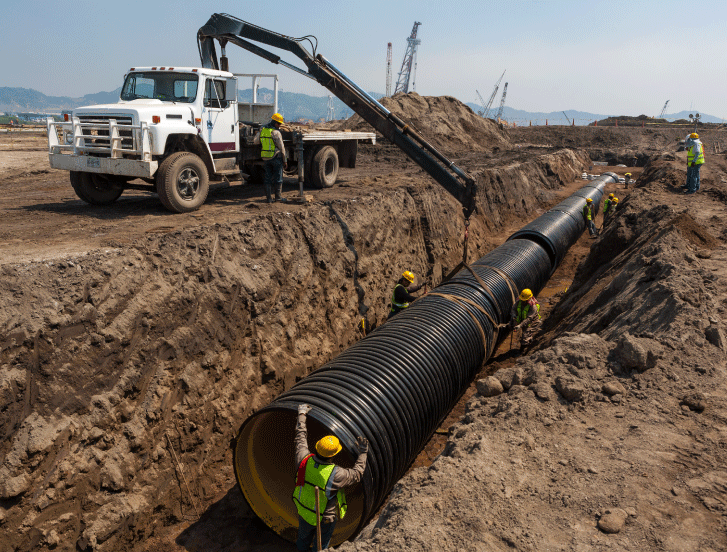In urban areas, an effective drainage system is essential to manage rainwater and storm runoff efficiently. An underground drainage system, comprising various components, plays a crucial role in preventing flooding and waterlogging. This concealed infrastructure, provided by trusted companies like Leenus India, ensures seamless water flow management.
Key Components of the Underground Drainage System:
The underground drainage system consists of several key components that work together seamlessly:
- Collection Points: Grates, inlets, and catch basins are strategically installed at ground level to capture rainwater and allow it to enter the underground network. These collection points efficiently gather water from various surfaces, preventing it from pooling and causing potential flooding.
- Pipes: A network of underground pipes, made of materials such as concrete, PVC, or HDPE, transports the collected water to designated storage areas or discharge points. These pipes ensure the smooth flow of water throughout the system, maintaining an effective drainage process.
- Storage Reservoirs: Underground chambers or tanks act as temporary storage for excess water during heavy rainfall. By regulating the flow and releasing water gradually, these reservoirs reduce the strain on downstream drainage systems, enhancing their efficiency.
- Outlet Structures: Designed to ensure minimal environmental impact, outlet structures allow the controlled release of water into natural water bodies or designated stormwater management facilities. This careful management helps preserve the ecological balance of surrounding ecosystems.
Managing Wastewater with Underground Drainage System:
Beyond rainwater and storm runoff, the underground drainage system also integrates a sewer network responsible for collecting and disposing of domestic and industrial wastewater. Two significant components are the Sanitary Sewers and Combined Sewers.
Sanitary Sewers:
These sewers carry human waste and soiled water from sinks and plumbing fixtures to treatment facilities, ensuring proper sanitation and preventing the spread of waterborne diseases.
Combined Sewers:
Common in older urban areas, combined sewers handle both storm water and wastewater. To reduce combined sewer overflows (CSOs) during heavy rainfall, many cities are modernizing their systems, thereby protecting the environment and public health.
Sewage Treatment Plants:
At the end of the sanitary sewer network, sewage treatment plants play a pivotal role in purifying wastewater. Through a series of processes, pollutants, organic matter, and harmful bacteria are removed, making the water safe for discharge into natural water bodies like rivers, lakes, or oceans. This critical step safeguards the environment and public health, ensuring that treated wastewater has minimal impact on the ecosystem.
Maintenance and Upkeep:
To maintain the efficiency of the underground drainage and sewer systems, regular maintenance is essential. Periodic inspections, cleaning of pipes and reservoirs, and timely repairs or replacements of damaged components are all crucial tasks. Proper maintenance not only prevents blockages and system failures but also contributes to the overall effectiveness and longevity of the drainage and sewer systems.
An underground drainage system, complemented by a well-designed sewer network, serves as vital infrastructure for urban areas. Beyond managing stormwater to prevent flooding, it ensures the proper disposal of wastewater, fostering sanitation and environmental protection. Collaborating with reputable providers like Leenus India guarantees a reliable and long-lasting system, contributing to sustainable and environmentally conscious urban environments. Together, these systems pave the way for cleaner, safer, and more resilient cities, promoting the well-being of communities worldwide.

